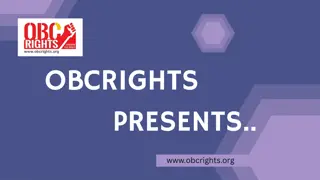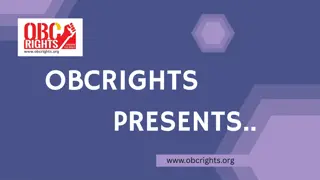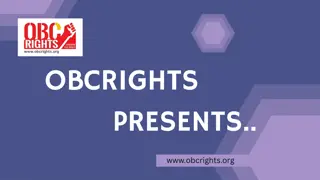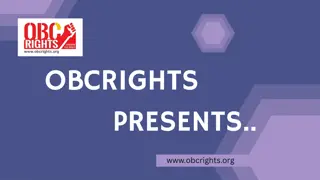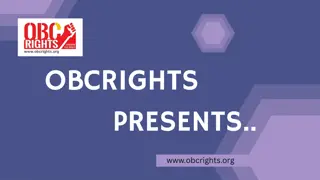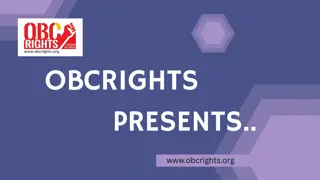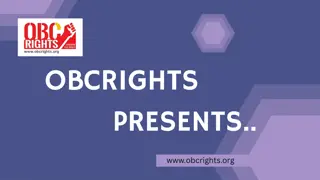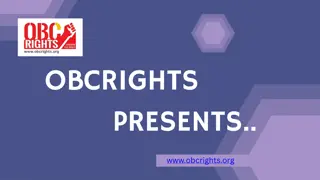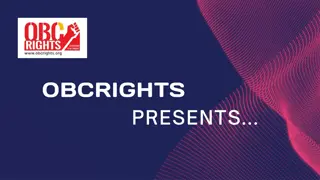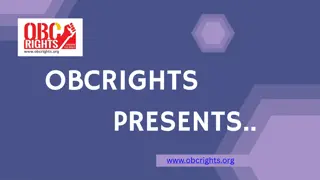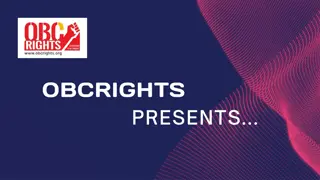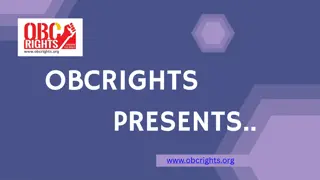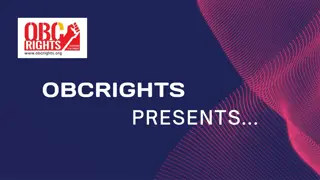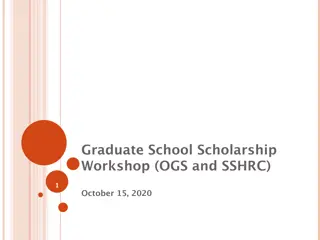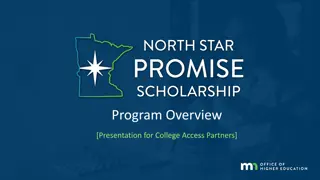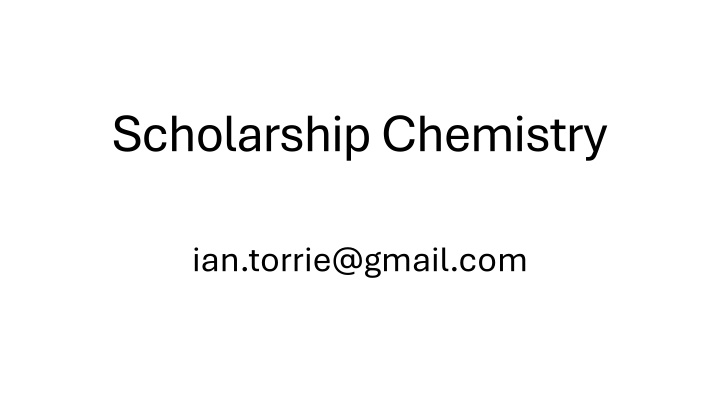
Understanding Chemistry Scholarship Assessment
Explore the differences between Scholarship and NCEA in Chemistry, strategies to help students succeed, and resources available for teachers and students. Get insights into the performance standards, assessment specifications, and content details for the Scholarship examination in Chemistry.
Download Presentation

Please find below an Image/Link to download the presentation.
The content on the website is provided AS IS for your information and personal use only. It may not be sold, licensed, or shared on other websites without obtaining consent from the author. If you encounter any issues during the download, it is possible that the publisher has removed the file from their server.
You are allowed to download the files provided on this website for personal or commercial use, subject to the condition that they are used lawfully. All files are the property of their respective owners.
The content on the website is provided AS IS for your information and personal use only. It may not be sold, licensed, or shared on other websites without obtaining consent from the author.
E N D
Presentation Transcript
Scholarship Chemistry ian.torrie@gmail.com
What this presentation covers What is Scholarship and how is it different to NCEA? How can I encourage my students to enter? How can I help my students achieve success? What resources are there to support teachers/students? Some content specific teaching tips including some extension ideas that can be useful for Scholarship.
Scholarship vs NCEA NCEA was designed as a standards based qualification, but in reality is partly norm referenced as the PEPs help ensure consistency between different years. Scholarship was set up as an assessment to rank our most able academic students, but several years ago it was converted into a standards based assessment. The student will use knowledge of chemistry to demonstrate the ability to integrate and apply chemical principles and skills to a wide range of situations, to analyse problems from a chemical perspective and present coherent and well-reasoned answers.
Scholarship Chemistry performance standard Scholarship Performance Descriptor Scholarship Performance Descriptor The student will demonstrate aspects of high level: analysis and critical thinking integration, synthesis, and application of highly developed knowledge, skills, and understanding to complex situations logical development, precision and clarity of ideas. Outstanding Performance Descriptor Outstanding Performance Descriptor In addition to the requirements for Scholarship, the student will also demonstrate, in a sustained manner, aspects of: perception and insight sophisticated integration and abstraction independent reflection and extrapolation convincing communication.
Assessment specifications No more than 4 questions worth 8 marks each Questions may be open-ended or structured in a step-wise fashion. Candidates are expected to provide answers to ALL questions. Candidates will require an approved scientific calculator. A periodic table and spectroscopic data table will be provided. Other numerical data or reference material will be provided as necessary. Symbols, nomenclature and formatting will use IUPAC conventions.
Content/context details Content may include quantitative analysis, organic chemistry, spectroscopy, redox & electrochemistry, rates of reaction, chemical equilibria, aqueous systems, particles, substances and thermochemical principles. Questions may be asked within a variety of unfamiliar contexts. Some questions may cover material from more than one content area and involve extended discussion. Questions may require skills developed during practical work, such as processing/evaluation of data or information
Scholarship results Scholarship is marked out of 32 and the top 3% of the national cohort at L3 receive financial recognition. 2023 3.13% 229 S 24 OS 2022 2.34% 171 S 28 OS 2021 2.33% 176 S 27 OS 2020 2.10% 159 S 28 OS 2019 3.00% 249 S 28 OS Because of differences in their assessment styles there is not a high correlation between NCEA grades and Scholarship results. Vagaries in NCEA marking systems can often mean a student with Scholarship does not attain 3 Ex grades in the NCEA externals.
How can I encourage students to enter Successful scholarship awards nationally are dominated by private schools and large (often single sex) city schools. The latter often have accelerant programs where many students cover L3 in Yr12 and focus on Scholarship in Yr 13. But scholarships are also awarded to students from low decile and isolated or small schools because success is talent dependent. So how can we support teachers to encourage students from a greater range of schools to enter. Particularly in schools where there is no history of scholarship entry or where the teacher may lack confidence because they are new or non- specialist teachers.
Steps to encourage success with Scholarship Start preparing the ground early and identify enthusiastic, capable students through their engagement with Science Fairs or clubs etc. Try and include either CB1.2 or CB1.4 into your Yr 11 program if you do the latter, it covers much of C2.4 so more time is available in Yr 12. Encourage your Yr 12 students to enter the Chemistry Olympiad program. - Students can work independently on practice questions for the selection exam and if they make the 120+ national training program, they can work collaboratively with other students or the teacher on the provided materials - As well as improving their L2 NCEA results, students who make the final training camp of ~30 have a very high success rate in Scholarship in Yr 13. If your school does not offer all 3 externals at L2, encourage Olympiad or potential Scholarship students to sit or at least work through these.
Supporting Scholarship students There are many resources that student can work through independently. Offer a weekly Scholarship tutorial time for interested students, as even two students can provide collaboration and mutual encouragement. A tutorial should contain a mix of some explicit teaching and time for students to work on questions either individually or in groups. Cover any of the 3 external standards not included in the Yr 13 program. If C3.1 extended investigations are not offered, go over all the quantitative analytical skills, particularly back titrations. Offer a 3+ hr final revision tutorial at least a week prior to the examination.
General Scholarship Resources An A-Level Chemistry text such as Advanced Chemistry by Clugstone & Fleming ISBN 0-19-914633-0 or an IB text is a useful reference that keen students can work through independently. The Scholarship Chemistry AME workbook by by Jan Giffney provides good summary notes and lots of non-NZQA questions with worked answers. Scholarship examination materials (exam and assessment schedule) for previous 3 yrs, or older exams from websites such as No Brain Too Small. NZQA L3 and Scholarship resource sheet. On-line Scholarship course from Bestchoice. Other on-line courses for reference - Chemguide and LibreTexts.
SCENZ Olympiad resources (open access) A resource containing the following items to assist students prepare for the selection exam held at the end of term 3: 1. Some brief notes that provide some stimulus/extension for both the Olympiad and Scholarship programs. 2. A set of 9 worksheets with fully worked answers 3. Selection exams from 2014-21 with worked answers. Note: In recent years only MC questions have been asked, but the earlier longer questions also develop useful skills. 4. Selection exams from 2014-21 with worked answers, 5. A basic template for a student information sheet.
SCENZ Scholarship resources (open access) Scholarship 101 an introduction and overview by Scott Franklin - overview of Scholarship, its requirements and how to support students prepare for the examination. Scholarship problem solving skills - by Dr Suzanne Boniface - a step by step guide providing guidance on how to approach solving problems across all topics using fully worked examples. Scholarship Extension material by Ian Torrie (available early 2025) - Notes on extension material that could be delivered to students during teacher led tutorials or done independently by students, plus a large variety of Scholarship type questions with worked answers.
What extension material is worth teaching? Details of these are covered in the SCENZ Olympiad student notes resource or the new Scholarship resource being released early 2025. INVESTIGATIONS and QUANTITATIVE ANALYSIS INVESTIGATIONS and QUANTITATIVE ANALYSIS Revise ID of ions - particularly the formation of complex ions. Concept of a back titration. Concept of limiting reagents and % yields. ? ? ? ? ? ? ? ? For an equation aA + bB cC + dD Use simultaneous equations to solve stoichiometry problems. = = = ? ? ? ?
REDOX REDOX ELECTROCHEMISTRY ELECTROCHEMISTRY Range of possible oxidation states metals 0 ->X, non-metals X-8 X Use to identify correct oxidant & reductant e.g KMnO4+ FeSO4 ? Use change in oxidation number to quickly balance redox equation. Balancing redox equations in basic conditions. (Add H+to both sides) Auto-oxidation e.g 2H2O2 2H2O + O2 or Cl2 + H2O HOCl +HCl In electrochemical cells, spontaneous reduction always occurs for the half cell with the most positive reduction potential. CR(R) Note that reduction potentials vary with concentration, so the products of brine (NaCl) electrolysis change from H2and O2in dilute solution to H2 and Cl2in more concentrated solutions to Na and Cl2in molten. Note that a positive Eocellvalue means that the reaction is energetically favorable but may still be kinetically slow. e.g graphite diamond. CR(R)aP aP
STRUCTURE and BONDING STRUCTURE and BONDING Bonding is a continuum from ionic through polar covalent to covalent (with slightly arbitrary boundaries) but all involve electron competition. Hydrogen bonding is NOT the strongest type of intermolecular attractive force. e.g. why is candle wax a solid whereas water is a liquid? Assigning formal charge helps identify the most stable Lewis diagram e.g why does SO42-contain two double bonds instead of 4 single bonds. AB5structures have 2 different bond angles , so lone pairs preferentially occupy the equatorial 120opositions to minimise repulsion. Size does matter e.g why do both PCl3and PCl5exist but only NCl3 and why can carbon form multiple bonds but silicon can only form singles. The Born-Haber cycle is a useful example of Hess Law calculations. Using qualitative changes in total entropy ( S(sys) + S(surr)> 0), rather than Gibbs Free energy can be a useful approach.
SPECTROSCOPY SPECTROSCOPY Revise the 10 step method to identify an organic structural formulae using given IR, NMR-12C and MS data. ORGANIC ORGANIC Identify possible structures from a molecular formula e.g C4H7Cl (12) What type of molecule could have a molecular formula of C4H8O? Use clues from molecular structure and isomerism to identify unknown e.g. a chiral carbon would mean a primary alcohol must have a branched carbon chain or maybe secondary alcohol. No enantiomers despite branching indicates symmetry or 2 identical alkyl groups on branched carbon. Use molecular formula to determine degrees of unsaturation (rings or double bonds , C=C or or C=O). In going from one molecular formula to next determine what has been added or removed eg removal of 2H atoms for reduction of aldehyde or ketone to alcohol or removal of water with no change in number of C atoms is likely formation of cyclic ester.
AQUEOUS SOLUTION EQUILIBRIA AQUEOUS SOLUTION EQUILIBRIA Relative concentration of species in different solutions e.g CH3COONa The stronger an acid, the weaker its conjugate base (as Kax Kb= Kw), but this doesn t mean that the conjugate of a strong acid is a weak base. Le Chatelier s is only a guiding principle which is based on the law of invariant equilibrium constant i.e. for a given reaction the equilibrium constant cannot change unless the temperature changes. USE ICE tables for changes in equilibrium e.g. for H2+ Cl2<-> 2HCl Kc= 4.0 = (4 + 2x)2 / (2-x) x (4-x) so x = 0.4 and new (H2) = 1.6, (Cl2) = 3.6, (HCl) = 4.8




